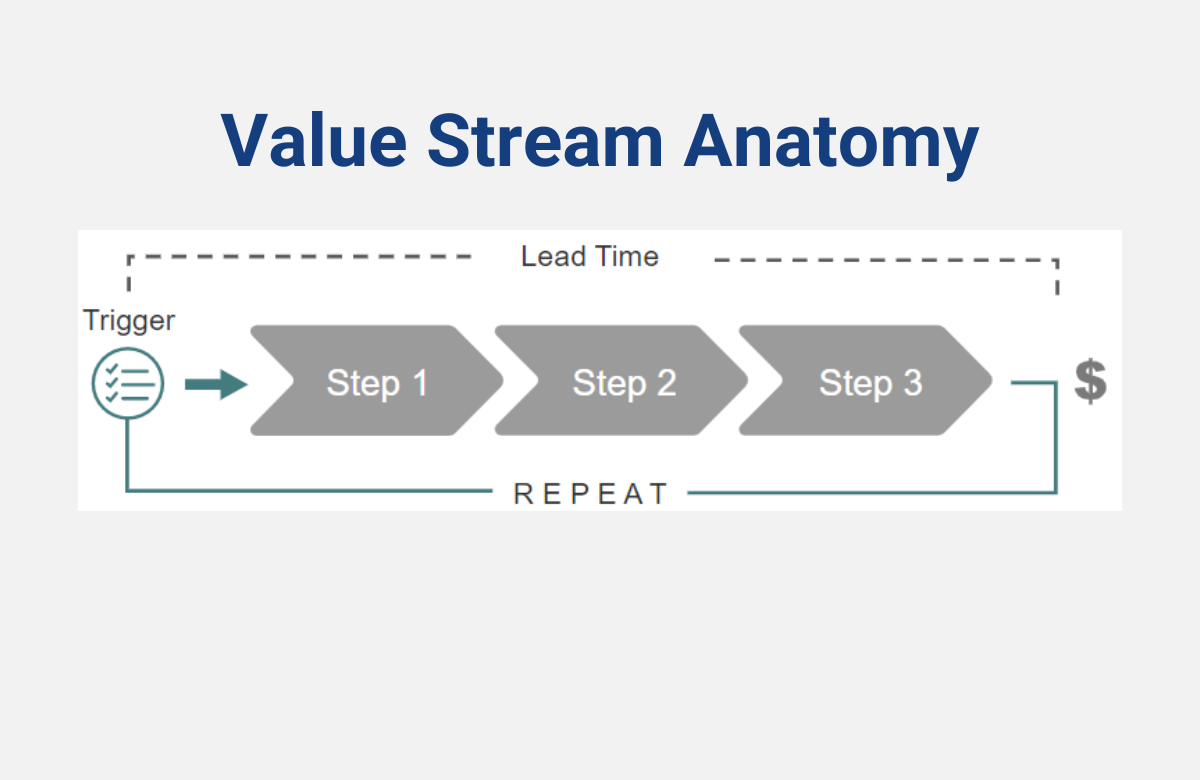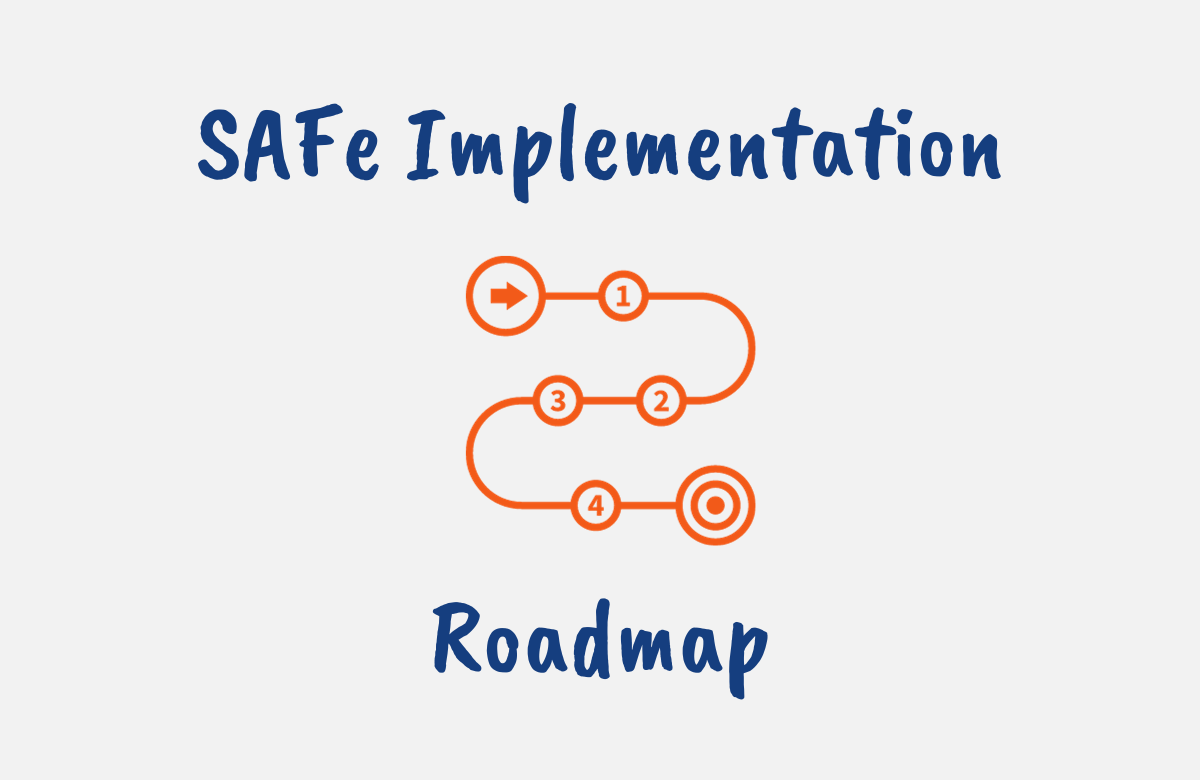Implementing a new framework like SAFe requires careful planning to be successful. As an organization adopting Agile ways of working at scale, you need a clear roadmap to overhaul your culture and processes.
The SAFe implementation roadmap provides a step-by-step guide to transform your teams to Lean-Agile. It describes the critical moves to install SAFe across your enterprise and achieve business agility.
With the roadmap, you can curate an Agile transformation built on SAFe principles. From reaching a tipping point to launching Agile Release Trains, the roadmap enables you to implement SAFe smoothly.
In this article, we’ll cover what the SAFe implementation roadmap is all about, and its purpose, and then we dive deep into the 13 steps of the roadmap to understand what each step entails.
What is SAFe?
The Scaled Agile Framework (SAFe) provides a set of principles, values, and practices for scaling Agile across the enterprise and helping organizations implement Lean-Agile practices beyond individual teams.
SAFe enables alignment, collaboration, and delivery across multiple Agile teams to build large, complex solutions by incorporating systems thinking, Lean product development, and Agile development.
SAFe integrates these to provide a comprehensive framework for Lean-Agile at scale. With SAFe, you can take iterative, team-level Agile approaches and apply them across the organization up to portfolio levels to achieve business agility.
Competencies Used for SAFe
SAFe integrates several key competencies to enable Agile transformation at scale:
- Team and Technical Agility: Empowering teams to deliver value quickly through iterative development and collaboration
- Organizational Agility: Structuring the organization to rapidly respond to change and opportunity
- Lean Portfolio Management: Aligning portfolio execution to the organization’s strategy with Lean-Agile principles
- Lean-Agile Leadership: Leading with a servant leadership mindset to enable optimal flow of value
- Enterprise Solution Delivery: Delivering large, complex solutions with agility at scale
- Continuous Learning Culture: Promoting relentless improvement through inspection and adaptation
- Agile Product Delivery: Building innovative products and services with fast time-to-market
Your SAFe implementation roadmap should develop expertise across these competencies as they form the foundations of SAFe and are critical for scaling Agile across your teams, programs, and portfolio.
What is the SAFe implementation roadmap?
The SAFe implementation roadmap provides a step-by-step process to guide organizations in adopting SAFe.
It describes 13 critical steps to implement SAFe in a systematic, successful way.
These steps facilitate real transformation to achieve business agility through SAFe helping to methodically install each SAFe component across your teams, from reaching a tipping point to launching Agile Release Trains (ARTs).
It enables you to adopt Lean-Agile ways from team to portfolio levels. Following the roadmap avoids missteps and helps your workforce embrace the Lean-Agile mindset.

Purpose of a SAFe Implementation Roadmap
A SAFe implementation roadmap serves as a valuable guide for organizations adopting the Scaled Agile Framework (SAFe).
The roadmap enables successful, structured transformation by outlining critical milestones and activities across multiple phases. Its key purposes include:
Provides Strategic Direction
The roadmap sets the vision and overall direction for the SAFe implementation journey. It aligns executives, leaders, and teams on core objectives.
Outlines Major Milestones
It identifies major milestones for establishing new roles, processes, events, and deliverables as teams embrace SAFe principles.
Sequences Activities
The roadmap sequences the detailed activities needed to transition to Lean-Agile ways of working, ensuring manageable change.
Optimizes Pace and Timing
It sets a cadence for moving through implementation in a methodical yet responsive way based on business value streams.
Facilitates Coordination
With a shared roadmap, all groups can proactively prepare for upcoming changes and coordinate their efforts appropriately.
Enables Measurement
Progress against the roadmap provides a way to measure success and identify potential course corrections required.
Reduces Risks
The deliberate, incremental phases of the roadmap help mitigate risks during the significant cultural and operational transformation required by SAFe.

SAFe Implementation Roadmap Steps
The 13 steps of the SAFe implementation roadmap are:
1. Reaching the Tipping Point
The first step is reaching a tipping point for change in your organization. You need an overwhelming reason to change the status quo as your teams likely follow existing practices and resist embracing new ways of working.
This could be struggling to meet customer demands or requiring faster time-to-market. Or it could be under new leadership with a compelling vision.
Identify the burning platform your organization faces and communicate the urgent need for change and the benefits SAFe can provide to get executives aligned on the value of transforming to Lean-Agile through SAFe.
Also, motivate your workforce to accept change, not resist it. They need to see SAFe as the solution and stay open-minded.
Reaching this tipping point of awareness lays the foundation for change and provides the impetus your organization needs to adopt SAFe for business agility.
2. Train Lean-Agile Change Agents
Once your organization reaches the tipping point, the next step is developing Lean-Agile change agents.
These influential individuals will drive your SAFe implementation and should have expertise in Lean-Agile principles and SAFe.
Enlist respected leaders as change agents to lend credibility. Change agents influence teams and leaders to adopt new mindsets and practices aligned to your SAFe roadmap and balance business agility and predictability critical for enterprise implementations.
They also communicate the vision, rationale, and benefits of change. They coach teams on applying Lean-Agile principles using SAFe, identify and reduce impediments to change, and sustain momentum throughout the transformation journey.
Select and train these strategic change agents early on and empower them to shepherd your organization through adopting and applying SAFe.
3. Create a Lean-Agile Center of Excellence
Creating a Lean-Agile Center of Excellence (LACE) is key to driving your SAFe transformation.
The LACE is a small team dedicated to implementing SAFe Lean-Agile ways of working and should contain respected members across functional groups.
The LACE guides applying SAFe through coaching, training, and execution. It spearheads communicating the vision and need for change, while the team creates and carries out the SAFe implementation plan.
The LACE identifies value streams and helps launch Agile Release Trains (ARTs), supports teams in adopting SAFe practices and mindsets, and helps leaders develop Lean-Agile skills to lead transformations.
It fosters relentless improvement via regular Inspect and Adapt workshops. Lean-Agile Center of Excellence members are critical change agents to institute SAFe throughout your organization.
4. Train Executives, Managers, and Leaders
Executive support and leadership are vital for SAFe transformation. For all leaders and managers to gain the necessary proficiency in Lean-Agile principles, they need comprehensive SAFe training
With training, leaders can actively participate in leading Agile Release Trains (ARTs) to spearhead change and help teams deliver value.
Leaders should role model Lean-Agile behaviors. Therefore, equip executives to communicate the vision and rally the organization.
Train them on cultivating innovation, devoting themselves to continuous improvement, and empowering teams.
5. Lead in the Digital Age
In the present digital age, the rapid pace of change demands working in new and more agile ways.
Consequently, adopting SAFe requires leaders who can guide their organization through digital transformation.
To lead your teams through uncertainty and complexity, Lean-Agile leadership is essential. So, equip your leaders with the mindset and skills to thrive by fostering vision, creativity, and a collaborative ethos.
Also, develop their comfort with ambiguity, customer focus, and experimentation. Enable them to take measured risks and pivot as needed to promote transparent communication and empower team members.
Leaders must role model agile behaviors and ways of working. They should embrace learning, and growth. Guide them to make data-driven decisions balancing speed and quality.
With training, leaders can transition from traditional command-and-control management to coaching and mentoring.
To get there, develop leaders adept at the pace of change today so their leadership can enable the flexibility and innovation SAFe requires.

6. Organize Around Value
Identifying your organization’s value streams is a critical step – mapping the end-to-end series of steps to deliver value to customers.
Analyze these streams to uncover waste and delays, focusing on improving flow and increasing value by addressing bottlenecks.
Organize cross-functional Agile teams into Agile Release Trains aligned to each value stream. These trains deliver value in a regular cadence tailored to the stream.
Teams focus continuously on value delivery versus just feature output. Collaborate across teams to fix inefficiencies at intersections. Optimized streams improve productivity, quality, and speed.
Orienting around customer value is central to SAFe success. Break down silos fostering a shared mission on value streams. Lean management of value flows enables business agility.
Continually improve to meet changing customer needs. Organizing around value powers your SAFe transformation forward.
7. Create the Implementation Plan
With executive support, change agents in place, and value streams mapped, it’s time to outline implementation.
Limit detailed long-term plans, taking an iterative approach instead. Do enough initial planning to launch your first Agile Release Train (ART) pilot and then learn and adapt as you go.
Map out the initial value stream and ART. Define the first Program Increment (PI) objectives and cadence for team alignment.
Schedule key events like PI Planning and Inspect and Adapt workshops on the calendar. Identify roles like Release Train Engineer and Scrum Masters. Create a lightweight, flexible plan to kickstart the pilot ART.
Continuously adjust based on learnings gained, scaling the plan over time rather than fully upfront.
Regularly adapt it based on insights from execution, and allow your implementation to emerge iteratively, remaining agile as you transform to SAFe.
8. Prepare for ART Launch
With your first Agile Release Train (ART) plan defined, start launch preparations. Train teams on SAFe and Lean-Agile principles aligned to their new roles.
Communicate the ART’s vision and purpose while having teams build working agreements to enable alignment, and clarify objectives for the first Program Increment (PI).
Conduct launch readiness assessments of teams joining the ART and address any gaps to ensure smooth onboarding.
Ready your infrastructure for PI Planning tools and events for managing backlogs and tracking progress, and confirm the availability of key leaders to actively participate in the ART.
Clear impediments to launch success while fostering energy, commitment, and camaraderie between teams. The initial ART launch sets the tone for SAFe adoption, so ensure teams feel motivated and supported through this change.
With diligent preparation, you can launch your first ART smoothly and use the learnings to refine your SAFe implementation plan.
9. Train Teams and Launch ART
With your first Agile Release Train (ART) prepared, it’s time to launch. Conduct comprehensive SAFe and Lean-Agile training for participating teams.
Emphasize the mindset shift required to become cross-functional and focused on delivering value. Ensure teams understand PI Planning and take ownership of Program Increments.
Hold your inaugural PI Planning where teams map out objectives for that PI. This aligns teams to deliver the ART’s mission for that iteration. Clearly define team backlogs to scope work for the PI.
Confirm roles and cadences for synchronizing work through stand-ups and other ceremonies.
Monitor the energy and collaboration levels during PI Planning, and adjust your approach to ensure high engagement.
The first PI Planning sets the pace for how your SAFe implementation will unfold. With invested teams aligned to the ART mission, launch your train.
Continuous inspection and adaptation will refine your ART execution. But with training and commitment, your first ART can deliver value.
10. Coach ART Execution
With your Agile Release Train (ART) launched, actively coach teams on executing within the new SAFe model.
Attend key ceremonies to assist teams in applying Lean-Agile principles. Observe team dynamics and inspect their use of SAFe rituals and artifacts.
Guide teams through PI Planning, backlog refinement, daily standups, retrospectives, and demos. Ensure the ART aligns with its roadmap and delivers value predictably.
Help resolve impediments and dependencies between teams. Reinforce SAFe values like a focus on quality, built-in security, and continuous improvement.
Coaching maintains team engagement and consistency in adopting SAFe. It identifies opportunities to improve how the ART functions. So, provide coaching through the first 2-3 PIs to cement new behaviors.
Gradually shift from active coaching to just problem-solving support. Keep teams aligned to SAFe principles while giving them autonomy to determine what works best for their context.
11. Launch More ARTs and Value Streams
Once your first Agile Release Train (ART) is productive, expand SAFe across your organization.
Use learnings from the first ART to refine training and launch activities. Identify additional value streams to organize into new ARTs based on your implementation roadmap.
Analyze value streams needing improvement and launch ARTs to rearchitect them. Continuously evaluate organizational priorities to launch ARTs delivering strategic value. Develop a pipeline of new ARTs and launch them in a controlled, sustainable pace.
ARTs provide the key SAFe construct to build business agility. With more ARTs oriented around customer value streams, you gain economies of scale.
Knowledge sharing between ARTs further propels SAFe adoption across your teams. Methodically launching new ARTs to cover your portfolio accelerates your organization’s transformation to Lean-Agile.
12. Enhance the Portfolio
As you scale SAFe through Agile Release Trains (ARTs), optimize the management of your portfolio. Adopt Lean-Agile principles for strategy and investment funding, and apply systems thinking to make strategic trade-off decisions on where to invest.
Continuously refine your portfolio with new learnings. Use Inspect and Adapt workshops to regularly realign funding and strategy to your goals. Ensure your portfolio provides the roadmaps, people, and resources your ARTs need to add customer value.
Enable leadership to participate in governance and make data-driven decisions on the portfolio. Facilitate value flow from portfolio into ARTs building solutions that achieve strategic objectives.
With Lean portfolio management, your investments maximize ROI and innovations delight customers as applying SAFe across teams and to your portfolio drives optimal business outcomes.
13. Accelerate
With SAFe applied across teams and portfolios, focus on accelerating results. Establish metrics on value streams to quantify improvements.
Challenge teams to increase productivity, quality, and flow. And celebrate successes while remaining committed to continuous improvement.
Keep innovating on how ARTs operate and collaborate. Share effective practices between teams and trains.
Listen to employees for improvement ideas and regularly inspect and adapt. Then provide additional training to strengthen the adoption of Lean-Agile mindsets.
Stay agile in your approach as needs change. Build business agility by responding rapidly to opportunities. With SAFe transforming how your organization works, leverage your strengths for competitive advantage.
Deliver value faster to customers and outpace rivals. Accelerating with SAFe sustains your transformation and strengthens your market leadership.
Benefits of SAFe Implementation
Implementing SAFe provides many benefits for an organization seeking business agility. These include:
1. Accelerated Time-to-Market
SAFe improves the speed at which organizations can deliver solutions to the market. It empowers cross-functional Agile teams to work in short, iterative cycles to continuously deliver value.
This incremental approach gets functionality to users faster than traditional approaches.
2. Higher Quality Products
The collective ownership, continuous testing, and rapid feedback cycles in SAFe result in fewer defects and higher customer satisfaction as issues get detected and fixed quickly rather than down the line.
3. Enterprise Agility
SAFe allows large organizations to achieve Agile’s advantages by coordinating hundreds of people into value streams providing the agility to respond quickly to market and customer needs at scale.
4. Strategic Portfolio Management
SAFe gives executives flexibility to continuously evaluate portfolio initiatives and funding allocation as business conditions evolve. This way, resources stay focused on the efforts that matter most.
5. Increased Productivity
SAFe eliminates waste in processes that impede productivity. Its incremental approach and rapid feedback cycles keep teams focused on the highest-value work thereby significantly improving workforce productivity.
6. Improved Employee Engagement
SAFe increases employee engagement by giving people a voice and purpose-orienting efforts around value streams. Workers gain a sense of shared mission to deliver value.
7. Greater Innovation
The Lean-Agile mindset and grassroots empowerment in SAFe spur greater innovation. Ideas can get rapidly tested and incorporated into products.
Conclusion
Following a SAFe implementation roadmap requires change, but enables business agility and faster value delivery.
With trained change agents and leaders guiding the way, take an iterative approach to implement SAFe.
Empower cross-functional teams to deliver value in Agile Release Trains oriented around improving customer-focused value streams. Regularly inspect and adapt as you drive this transformation.
The investment will pay dividends through greater alignment, productivity, innovation, and the ability to continuously deliver solutions that delight your customers.





